A great benefit of staying here for a longer time is that we can do things that we wouldn’t do if we were here for three or four weeks. Today is an example of that. In 2013 we stayed in the small town of Montigny-sur-Loing for five months; Montigny is about twenty-five minutes south of our current homebase in Samois-sur-Seine. While there, we walked miles along the Loing Canal, which connects the Seine with another canal 45 miles south. Today, we got to float down it!
The Loing Canal is built to what are called the Freycinet specifications. These specifications, developed when Charles Louis de Freycinet was Minister of the Interior, were instituted in 1879. They called for the locks of a canal to be 40 meters long and 5.2 meters wide; as a result, boats were built to this standard and, as canals were converted to it, could travel through any Freycinet canal.
The problem now is that the Freycinet canals are too small for profitable commercial transport. A Freycinet péniche (barge) can be 39 meters long; we regularly see transports on the Seine that are double that and have seen a few that are 110 meters long (360 ft). Now the Freycinet canals, including the Loing, are used almost exclusively for pleasure boats.
Last Saturday we learned that there is a 90-minute boat ride on the Loing Canal, leaving not far from Montigny-sur-Loing, so today, we put on our nautical clothes and went along.
Right off the dock: the Fromonville bridge. Originally it was a stone bridge (built around 1880) which was destroyed in 1940 in a futile attempt to slow the German army advance. The Eiffel Company designed and built this replacement post-war. Gotta say that I love iron bridges.
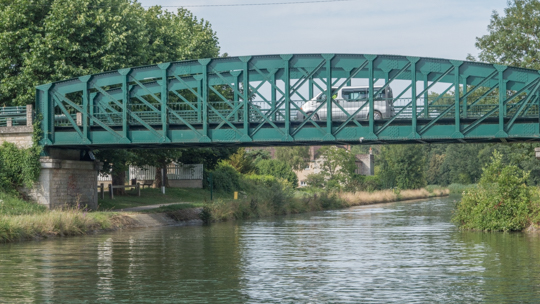
Can you see why we liked walking the canal in 2013? Calm, peaceful and beautiful. We walked probably 15 miles of this canal, a few miles at a time, repeating many sections.
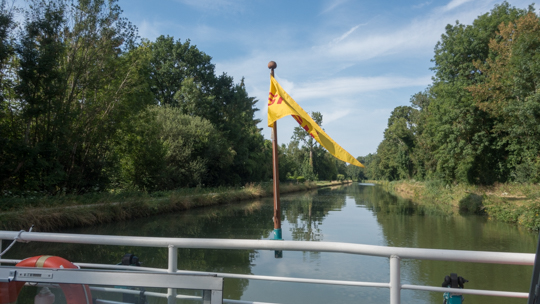
A Freycinet lock. This is now unused, but you can see how narrow it is. Our boat was about 1.5 feet narrower than the lock. Going out, the captain skillfully guided the boat through the lock without touching either side. Coming back, he didn’t do quite so well…
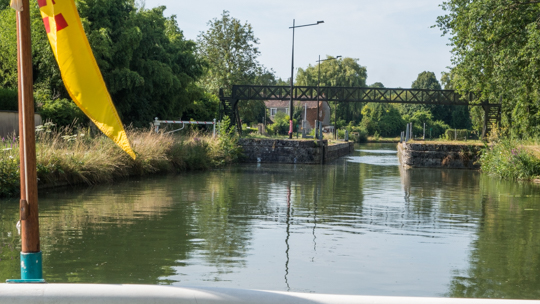
When the Loing Canal was active, an important cargo was sand; but not just any sand. Sand from this area is said to be among the purest in the wold: 99.9% silica. It has been used by the Murano glassmakers (Venice) for hundreds of years, and now is in demand worldwide for telescope glass.
Some houses along the river as we approached Nemours. River life looks nice, doesn’t it, except that in 2016 the water level along here rose about 15 ft from what you see, in the worst flood since 1910 and the third-worst in history. All these houses would have had water four or five feet deep on their main floors. Not so nice.
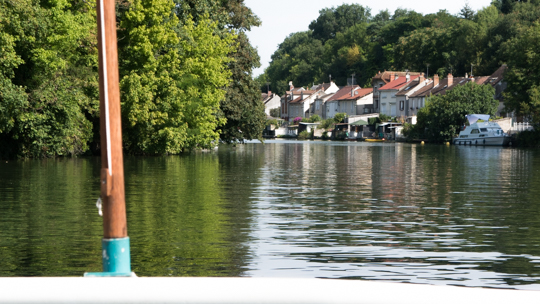
The river bank in Nemours. We walked along this beautiful promenade in 2013, so it was fun to see it from the river.
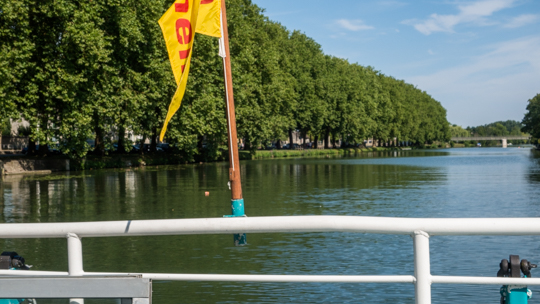
Another iron bridge, this time a pedestrian bridge.
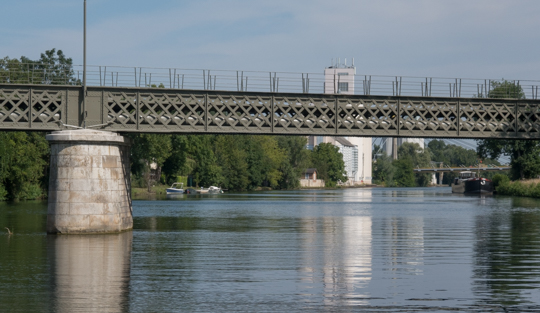
On the way back, the City Hall at Fromonville. Once the local chateau, it was given to the town of Fromonville-Moncourt, which has a population of about 2,000. I think all of them could fit in the City Hall.
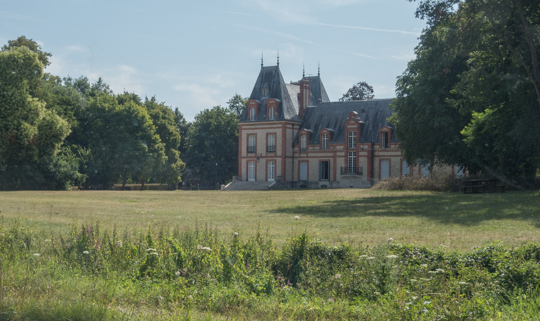
Back at the dock, our “shipmates” depart. You might notice a high proportion of gray-haired folks. It appeared that a local retirement home had an outing, as everyone knew everyone else, except us, the only non-French-speakers on board. However, we were given an excellent English (well, kind of English) written guide to the trip. We took the morning trip and early in the afternoon, we drove by the dock after visiting a local town and saw that, under a big tent, was another group of folks “of a certain age” as the French say (includes us now), having lunch before boarding for the afternoon trip. Someone is doing a good job of marketing!
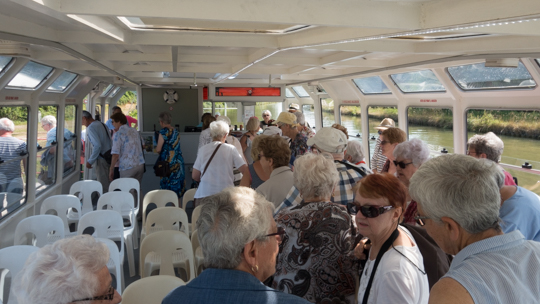
I gotta say, this was a totally fun thing to do. The Loing Canal was a big part of our stay here in 2013, and to float up and down it for 90 minutes was a great pleasure.

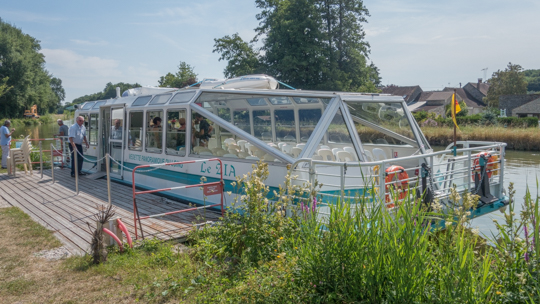
Love your posts, as ever. It seems that you are having a wonderful time, and we look forward to catching up with you.
Hugs,